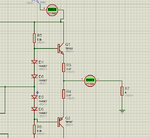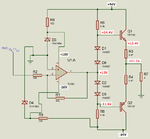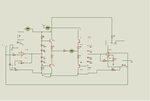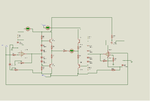julian403
Full Member level 5

- Joined
- Feb 28, 2014
- Messages
- 254
- Helped
- 1
- Reputation
- 2
- Reaction score
- 1
- Trophy points
- 18
- Location
- Argentina
- Activity points
- 2,105
Hi, I'am doing the next amplifier.

Where Vcc=34 V and Vee=-34. The operational it's TL082 and I use a zener diodo to get 16 V for the supply voltage of TL082. But the problem it is that for a input of 1 V and with the configuration of the operational like inversor i have to get 15 V peak on the output of operational but I get 2.5 V peak. Why?

The input have not offset.

Where Vcc=34 V and Vee=-34. The operational it's TL082 and I use a zener diodo to get 16 V for the supply voltage of TL082. But the problem it is that for a input of 1 V and with the configuration of the operational like inversor i have to get 15 V peak on the output of operational but I get 2.5 V peak. Why?

The input have not offset.






